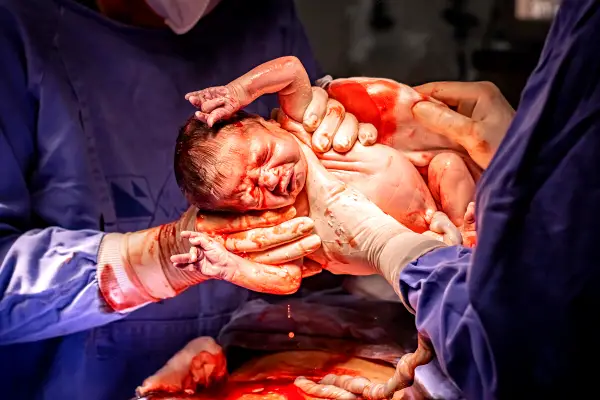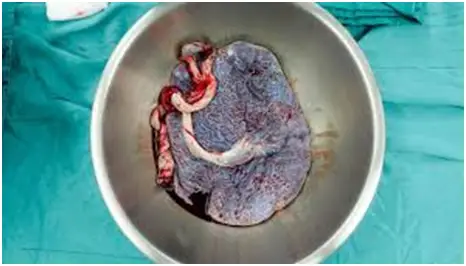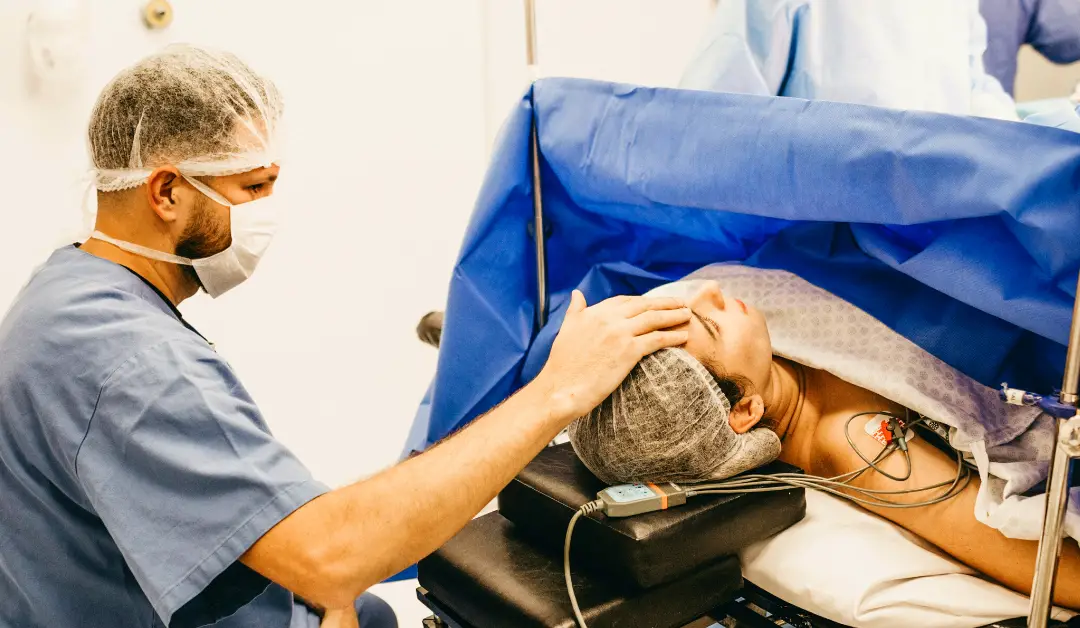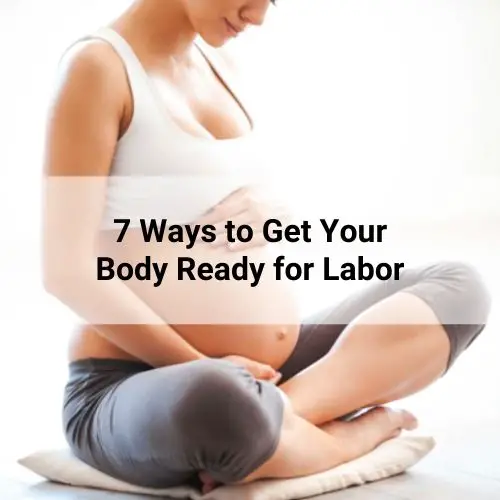Finally – you are in the final phase of delivery! Aside from giving birth to your little bundle of joy, this is also the time to breathe and relax as you are just waiting for your placenta to be delivered. Start your bonding with your little one now, but don’t forget to watch out for any signs and symptoms of possible delivery complications. (Your baby is in your arms and that means this was no false labor.)
Table of Contents
3rd stage of labor
The third and last stage of labor is the delivery of the placenta. This is the shortest stage and lasts for about 5 to 20 minutes. The placenta (or afterbirth) serves as your connection with your baby and is used to filter oxygen, glucose and other nutrients via the umbilical cord. The delivery of placenta is a vital part of your health as it may cause bleeding and other complications if placental fragments are retained inside the uterus.
What to expect
Here are some things you should expect from the 3rd stage of labor:
• The cord will be clamped and cut once pulsations are gone and once the baby’s born.
• The APGAR score of your baby will be checked where the heart rate, respiratory effort, muscle tone, response to stimulation and skin color will determine your baby’s overall health status.
• Small contractions will start to take place that will make the placenta separate from the wall of the uterus, and it will be marked by a sudden gush of blood. It will then be pushed out of the vagina.
• To speed up the delivery of the placenta, your doctor or midwife might apply pressure to your uterus by kneading it or through applying downward pressure on top of the uterus.
• Gentle tagging of the cord is also done to assist the separation of the placenta from the wall of the uterus.
• Lastly, in order to help the uterus return back to its normal size, oxytocin might be given to induce uterine contractions. This will help in minimizing the bleeding and other complications that might occur post-delivery.
• The doctor will also check if the placenta is complete and if there are missing pieces, and examine the shape and the consistency of the placenta.
After the delivery of the placenta

After the delivery of the placenta, it is the best time to spend some time alone to bond with your baby. According to studies, skin-to-skin contact is the most effective way to bond. It also promotes or initiates the start of breastfeeding. Take some time to relax and adjust to the new addition to your life. It helps if your partner is there too!
Taking care of your vaginal tear/repair
Vaginal tears may either be 1st or 2nd degree tears. 1st degree tears involve just the skin while 2nd degree involves both the skin and the vaginal muscle. It happens as your baby emerges out of the birth canal and the pressure from the baby may cause tearing. Sometimes, the doctor themselves cut the skin to make the delivery process easier for you, especially when you are already in labor for a long period of time.
If a tear is present, it is important to repair it in order to avoid complications and infections. After it is repaired, expect to experience tenderness on site. It often heals within 7-10 days and will make you feel sore in the perineal area. Some methods to relieve the discomfort at home and encourage the healing of the tears are the following:
• Ice packs are effective in reducing the swelling. Apply them on the affected area for about 10-20 minutes. Make sure to cover the ice with a clean cloth to protect your skin from the cold. Do not use it for more than 20 minutes as it may cause nerve damage.
• Stool softeners may be prescribed to you by your doctor. This will decrease your time in the comfort room and prevent you from straining.
• A doughnut-shaped pillow can also provide comfort while sitting if you are uncomfortable because of your wound.
• Proper perineal care is the most important way to alleviate the pain, prevent infection and promote healing. Some tips to keep your perineum healthy and safe from infections are the following:
o Clean the area by squirting warm water over it whenever you go to the bathroom.
o Pat it dry using gauze pads or soft paper wipes. Do not rub the area.
o Make sure to change your maxi pads every 4 to 6 hours.
o Do not touch the laceration site often and let your body do the work.
Possible post partum complications

Post-partum hemorrhage
Light bleeding is normal for about 4 to 6 weeks after delivery. Heavy bleeding that lasts for more than 10 days is considered post-partum hemorrhage. It might be due to the inability of the uterus to contract, retention of placental fragments inside the uterus, and trauma during the process of childbirth. This may be prevented by doing manual massages to your uterus to help promote contractions, but if this does not work, your health provider might prescribe you with contracting agents or perform a removal of the placental fragments from your uterus.Retained placenta
Retained placenta occurs if it is not delivered within 30 minutes or if placental fragments were left inside the uterus because of having a natural delivery. The retention of placental fragments, if not treated, may cause extreme blood loss and infection that may put the life of the mother at risk. The treatment is simply the manual removal of the placental fragments by a doctor or medications might be given to help contract the uterus to expel the placenta faster.Uterine inversion
Uterine inversion can be a fatal complication during childbirth. It is when the placenta fails to detach to the uterine wall, and when the tugging of the placenta is done, the uterus comes along with it. This condition causes massive bleeding and shock that may have unwarranted results. It is treated by manual reinsertion of the uterus by the doctor and some flushes of the vagina with a saline solution to inflate the uterus and prop it back to its original position. Congratulations on making it through Stage 1 of childbirth, Stage 2 of childbirth and this final stage. You are now a mommy! Click here to check out this handy labor packing kit.Related Articles:

Astley Golosinda
My background is in the field of medicine and I have a Bachelors Degree in Nursing. My thesis in Nursing was also published on Journal of Gerontology
For the past 4 years, I continued my studies and dedicated my time to acquiring a Doctorate of Medicine. I was a working student all throughout my post-doctorate degree. I have clinical experience in the hospital both as a nurse and now as a medical student.





